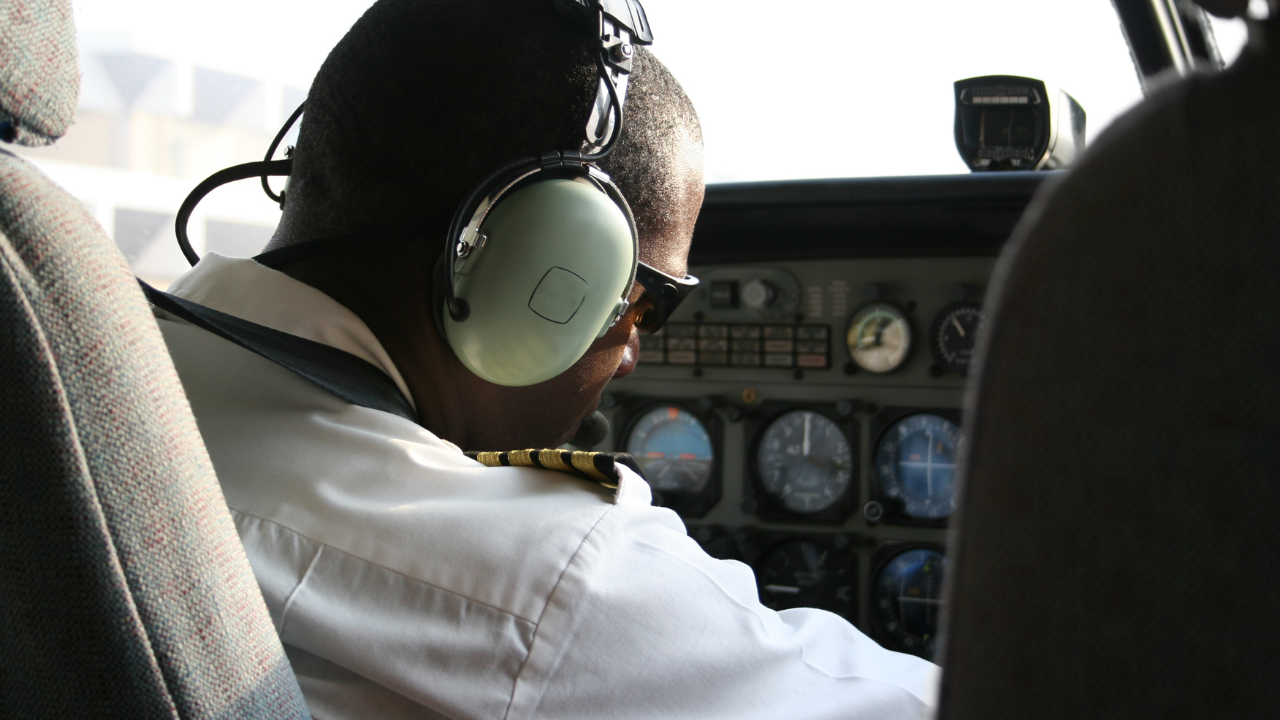Effective communication often requires you to do what others are not

I had just settled into my seat, preparing for the second leg of my flight from Hartford to Victoria, British Columbia, when the pilot emerged from the cockpit and introduced himself to us. He told us his name, briefly described the length and trajectory of his aviation career, and expressed his sincere love for flying.
Then he introduced the copilot, who was still in the cockpit, making final preparations for our flight. He cracked a joke about the copilot's brief tenure with a competing airline before noting and honoring his military service.
Then he said, "Here's what we'll be doing together today," and proceeded to quickly explain the flight in terms of time and expectations.
Eight minutes to push.
Three minutes to the taxiway.
Three hours, and maybe less, to Denver.
Smooth ride.
Unusual tailwind because of the reversed jet stream.
Then he reminded us about the important work done by the flight attendants, whose primary responsibility is to keep us safe, and asked politely but firmly that we obey their instructions throughout the entire flight. He promised to turn off the seatbelt sign whenever it was possible but also asked that we remain seated when it's turned on.
He cracked one more joke about himself, thanked us for making his love for aviation possible, and returned to the cockpit.
It took less than three minutes.
Simply effective communication, for so many reasons.
The pilot was personal and vulnerable, speaking about his love for aviation in honest, earnest terms. He was amusing, making jokes about his copilot and himself. He demonstrated respect and patriotism by honoring his copilot's military service. He provided relevant information. He reinforced order on the plane by reminding us about the role of the flight attendants. He was concise. He spoke well. He smiled. He was amusing. He genuinely seemed to enjoy his job.
Best of all, he connected with the passengers with this simple but brilliant sentence:
"Here's what we'll be doing together today."
With just seven words, he turned a group of strangers into a unified team.
He's the best pilot I've ever met, and here's the crazy thing:
I know nothing about his ability to fly the plane. We may have narrowly avoided two midair collisions and missed the Denver airport by 100 miles. I have no way of assessing his actual ability to fly a plane. But he's the first pilot who made me feel like I knew him prior to taking off, and I liked everything I had seen and heard.
As he was returning to the cockpit, the woman sitting beside me said, "This might be the first time I'm actually relaxed before takeoff."
I suspect others felt the same.
Here's the thing:
It takes so little to impress when it comes to effective communication. So few people are doing it well (or at all) that just a little bit of effort goes a long way.
The same is true in business, in marketing, in sales, and in advertising. The same is true for leaders and teachers and clergy members. So few people communicate well. Everyone claims to want to use storytelling to connect with their customers, clients, employees, and parishioners, but when it comes to actually telling a vulnerable, authentic, amusing, and engaging story, most shy away, unwilling to try or even learn.
Why?
Effective communication often requires you to do what others are not.
Storytelling requires you to be different. You must zig while everyone else is zagging. It means you must take a position at the tip of the spear. You must try new things, learn new skills, and dare to use them in front of other human beings.
For this pilot, it meant doing something I've never seen a pilot do so thoroughly and so well.
I've heard pilots make similar but not nearly as effective announcements over the intercom, safely tucked away in their cockpit, invisible to the passengers.
I've seen pilots make brief statements to passengers from the front of the plane.
But this pilot did a lot more. He did what others do not. It wasn't much, and it's certainly within the capacity of all pilots, yet in all my years of flying, I've never seen it done so well.
I also wouldn't be surprised if some of his fellow pilots scoff at his decision to talk to passengers in this way. Tease him about his storytelling. Make fun of his "schtick" behind his back.
Being different isn't always easy. Being highly effective is oftentimes threatening to others. Possessing the courage, wisdom, and wit to speak as effectively as that pilot did can engender envy in others who are too afraid to try or too unwilling to improve.
As a result, it takes so little to be perceived as excellent in communication. You can tell a smidgen of a story and often be perceived as a highly effective storyteller.
When everyone around you is tragically typical, it requires almost nothing to be excellent.











 Receive Helpful Storytelling Tips
Receive Helpful Storytelling Tips